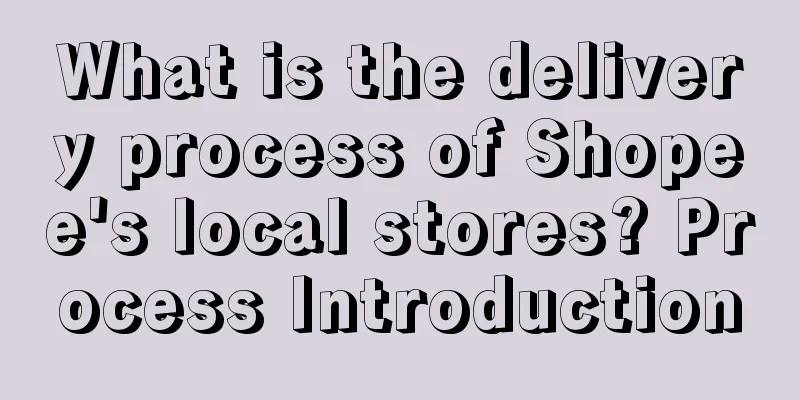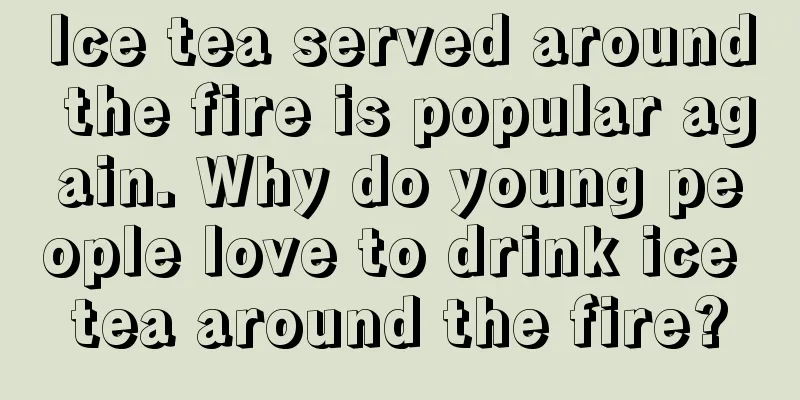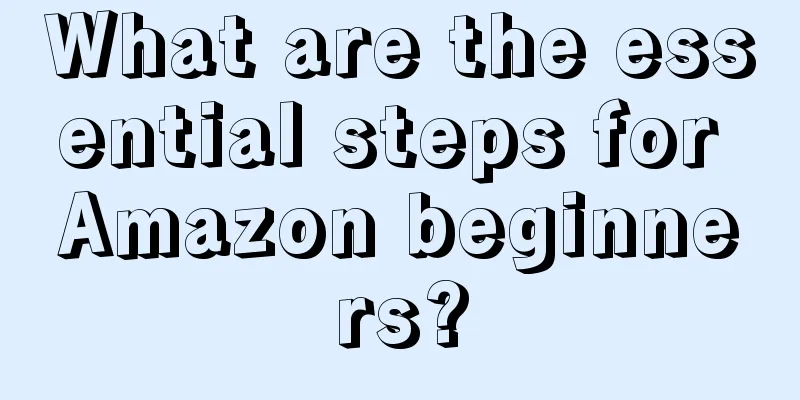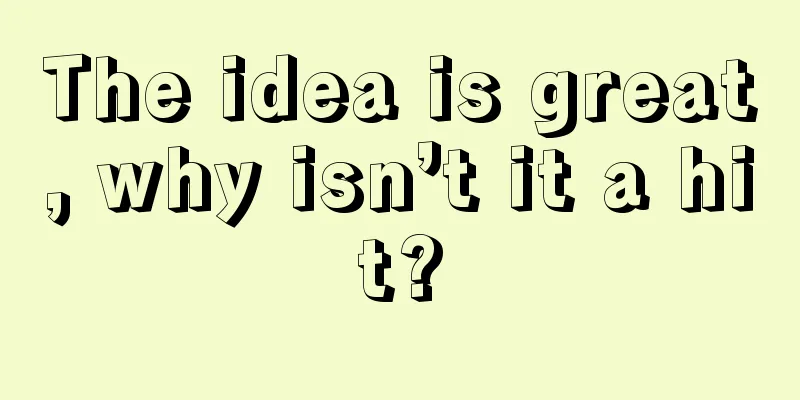8 Misconceptions and 6 Prompt Word Patterns of AIGC Marketing
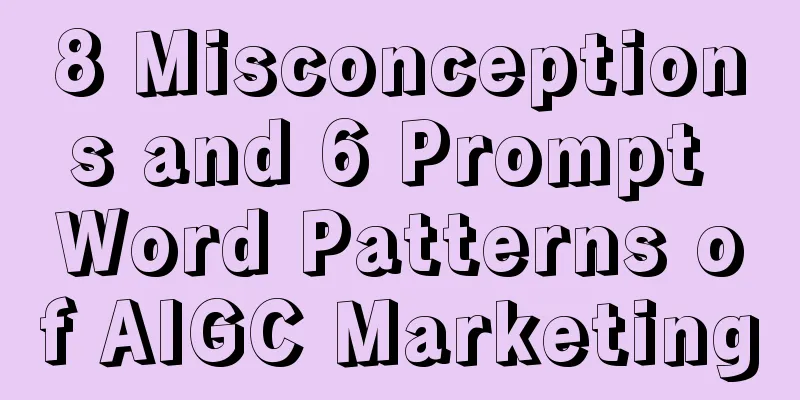
The development of AIGC technology has brought new opportunities to marketing, but for those who do brand marketing, we may find that AI tools do not seem to help us very well, especially those who are working on content and strategy. Because most of our work is creative, strategic, or professional, it is difficult to rely on AI to give a relatively satisfactory and reliable result. Sometimes we feel that it has too much nonsense, and even after playing with it for a long time, we still feel it is a waste of time. It is better for me to do it myself, and save the time of repeatedly communicating with it to modify and check whether the content is true. The reason why this situation is common is that although AI technology has advanced, the thinking behind AI marketing has not caught up. Conventional thinking about AI marketing includes:
For example, a company used an AI-based short video SaaS tool to clean video materials in batches and on a large scale, then remixed them and combined them with a matrix for delivery, but it did not produce very good results. Because they rely on quantity, tens of thousands of short videos are released every day, and the number of views seems to have increased, but the conversion rate is very, very low, and the effect is very limited. The reason behind this is that if there is no good content, there is only quantity but no quality. In the words of Chairman Mao, we still need to seek truth from facts and not act without considering the actual conditions. What specific problems do you encounter in your daily work? What specific tools do you need to solve them? Then find the corresponding AI tools. It is not necessary to use very advanced and sophisticated AI tools. The key is to understand the prompt word thinking of AIGC, design a "prompt word library exclusive to your own team", and then make modifications according to specific work and specific projects to "adapt to local conditions". So how do we transform the AI prompt words? This involves the key content of today’s live broadcast - prompt word thinking. However, before talking about prompt word thinking, there are some common misunderstandings that must be dispelled, because if these mistakes are made, it will still be difficult to use AI tools in actual marketing scenarios. 1. Input prompt words without thinkingSince it is a large language model, we must learn to create a sense of conversation pattern. For example, if we want the output of ChatGPT to look like a certain form of text, we need to give it a specific sense of pattern when outputting it. For example, what do we often see on articles? Like the title and the author, right? Therefore, if you want the AIGC model to output an article, when entering the prompt words, you must follow the structure of title, author, abstract, and main text. Therefore, the content it outputs will be more like an article rather than something else. For example, "Suppose you are a blogger of Xiaohongshu, please break down this copy of Xiaohongshu and break down the structure of this copy according to the beginning, middle, end, and emoticons" - this kind of prompt word is also designed according to the [sense of pattern]. 2. AI needs to be logicalA common misunderstanding is that GPT is essentially a large language model, not a logical thinking tool that can replace human thinking. Why? Because the generation process of large language models does not follow the logic and correctness of human thinking, it is imitative. We can let him imitate our thinking and gradually guide him to imitate our thinking process, so as to truly empower our work. Take brand marketing as an example. You have to let it learn to imitate your work experience. You have to input your work SOP and your cases into it, and then let it imitate. In this way, it can truly empower your work. For example, you have just joined a company, but your leader is unreliable, and your goal is to improve your abilities and strive for the opportunity to start business independently. At this time, you can input the background information into Chatgpt, but you cannot directly ask it to help you analyze it because it does not consider the social conventions. At this time, you need to list [your way of thinking, thinking direction, reference theories/viewpoints/books/basis] in the prompt words. The goal is for the AIGC model to follow and imitate your way of thinking. For example, the prompt words in the above context can be written as follows: Based on the background information I gave you above and my career development goals, please draw the following three conclusions and tell me the reasons for your reasoning:
The third point is that its generation process is not a linear thinking process, but random. Even for the same prompt word, the output is random. Precisely because it is random, it is a good thinking tool to help us expand our creativity. Because the AIGC model is actually better at divergent thinking, that is: it conducts various divergent thinking based on its database. But if you want it to help you gather your thoughts, judge and screen the final reliable answers, it may not be so good at it. Especially for brand marketers, when we use the AIGC model, a better idea is actually: tell him, I need more inspiration and more creativity now, and I need you to help me generate inspiration and creativity in different directions. It can bring you many unexpected gains. Some time ago, I was thinking about writing a poem to express the following meaning: "To wield a sword, one needs to overcome the fear of the coldness brought by the sword energy." So I asked Chatgpt: "Please give me 5 inspirations for ancient poems that can express this meaning." "Please give me 10 specific images that can express courage in ancient poems." Although a lot of the output is quite funny, with things like slaying demons and eliminating evil, it has to be said that it has broadened my thinking. 4. Standard answer?And because it is random, the content it outputs may be different every time and is not absolutely correct. For example, if you ask it for the first time, is this thing right or wrong? It may tell you that it is right. The same question, the second time it will tell you - this is wrong. Therefore, the results output by the AIGC model may not always be useful. Since it can't give you a definite answer, you also have to tell it:
Let’s take the “YES or NO” question we just talked about as an example. You require it to only answer yes or no, and you cannot say “maybe”. That’s the restriction.
Its answer can be said to be a model of nonsense literature. So, I revised the prompt:
Not only did he tell me clearly: what materials of furniture should not be used, what large areas of industrial-style metal pipes should not be used, but also what the key colors to use are. So to get an answer that is suitable for your question, you must tell it: the negative conditions and restrictive requirements, otherwise you may only get some useless nonsense. 5. Very efficient?The fifth misconception is that we may think that using Chatgpt can improve efficiency, and that it will be our assistant, or even our second-party role, but in fact it cannot truly understand your needs from your perspective. Whether it is branding, sales, marketing, or design, in order to ensure innovation and effectiveness, most of the time is spent repeatedly making demands on it, repeatedly letting it learn our way of thinking, learn the materials we give it, and input a large amount of objective background information. From this perspective, the way Chatgpt improves efficiency may not be as simple as we think. Because the principle of AIGC generation is based on: first, it receives a large amount of knowledge base, and based on your background information and your prompt words to predict what words it will generate next. Based on this principle, we will find that:
For example, if I want Chatgpt to help me write a live script today, I might tell it like this:
6. Understand what people sayThe sixth misunderstanding is that we may think that ChatGPT can understand what you say, but in fact it can only understand some common human languages. What does this mean? The reason is that ChatGPT uses a large amount of text data to learn human language patterns. Different words will trigger it to retrieve different text data. But if the word you are talking about is one of the words in your prompt words, it is relatively general, or it may be a special expression that you yourself would use, or your industry or specific user group may express it this way. However, the text it retrieves from the database may not match the meaning/concept of the word as you understand it. Therefore, the choice of prompt words is very, very important. Try to use general words as much as possible. Don't use original words or special words for niche groups or circles. For example, in the field of brand marketing, there are some commonly used terms in the industry, such as "brand co-branding program." However, when entering the prompt word, it would be more general (and in line with the English context) to use the term "brand cooperation program". If you don’t know how to change this word, you can directly ask Chatgpt: “What is the general term for brand co-branding?” Moreover, when we input the prompt word, we should consider more whether the word you input can help associate with the content of the relevant context. For example, if you want to output a brand collaboration plan, you can type more of these keywords in the prompt words: co-creation, topic, resource exchange, etc. 7. Strong memory?Why does ChatGPT always forget things? Because it can only remember a few requirements. If you give more than 3 requirements in the prompt words, it may not be able to follow all of them. Therefore, when entering prompt words, please remember to make the request of [small amounts and multiple times]. We can wait until it responds before making further requests. Alternatively, we can set a time limit for it, for example - "From now on, your output must follow certain requirements." Then, GPT will remember your setting and you don't need to enter it again. For example: "Please summarize a message starting from a certain conversation", "Please start from this conversation, and then organize the content of the conversation up to the previous position." Give it a time limit, so that it can help you crawl some information, and you won’t always feel that it forgets things. In addition, because Chatgpt’s “memory” is not as good as we think, if you use ChatGPT to analyze your documents… If your document is very large, it may take too long to analyze and there is no way to capture the information you want. Therefore, you should still adopt the method of [small amounts and multiple times]. Break down the document into multiple separate pages, break it down into different modules, let it gradually analyze different modules, and then integrate them at the end. For example, I had hoped to develop a "Personal Behavior Decision Scoring Table" and the prompts given to Chatgpt were as follows: “I want to build a scoring system to help me evaluate whether I should invest time in this matter, how much resources and energy should be invested, and whether it should be given the highest priority. I want to use a table to implement this scoring system, and the scoring logic needs to refer to the thinking mode of investors investing in a company. Please help me complete this scoring system.” Then I started to interact with it and polish it, and proposed about 10 modification points, but the scoring system it gave did not follow these modification points. What should I do then? You can only modify up to 3 modification points at a time, check the output results repeatedly, tell it where it is wrong, and it will correct it and say, "Oh yes, I was wrong." 8. Respect the facts?
Therefore, we must include fact-checking requirements in the prompt words. for example:
Otherwise, the probability of rollover is very high. Especially in a work setting, if you don’t do fact-checking, it could lead to you making a fool of yourself. Finally, we may regard it as a search tool, but in fact it must be equipped with some Internet plug-ins to search for real-time information. To give a more extreme example, some time ago I watched some videos about the history of World War II, and I was very curious about the reasons why Japan surrendered. Then I asked Chatgpt: Why did Japan surrender during World War II? Among the results it outputted, the first was the atomic bomb explosion, the second was the Soviet invasion, and the third was the exhaustion of the Japanese economy, and then it was gone. I then replied: No, a very big reason for Japan's surrender was that China continued to resist for so many years. Please add this to the list in the future. This is very important. Guess what Chatgpt replied? It said: "I see. I will remember to mention the importance of China's continued resistance when discussing the reasons for Japan's surrender. China's resistance during World War II did play a crucial role in Japan's surrender, which is a very important historical fact." The reason I give this example is actually to tell everyone that AI does not completely follow facts, and we still need to look at its output rationally. To give another example, McDonald's and Burger King used Chatgpt to fight each other. One asked what was the most delicious burger in the world, and the other asked what was the largest burger in the world. Then both companies made posters with the results generated by Chatgpt that were favorable to them. Burger King even enlarged it and placed its poster next to McDonald's Chatgpt advertising poster. But does this prove that they make the biggest and most delicious burgers in the world? This needs to be viewed from a historical perspective. From large items like countries to small items like hamburgers, all conclusions output by AI are still open to discussion. Tool list (partial): What if you don’t have Chatgpt and don’t know magic? Here are some free tools for everyone.
For design, I personally think dream studio is more useful. It is similar to stable diffusion. It has a positive prompt word and a negative prompt word. You can also set the output format to different formats and the output format to different proportions. For example, if you want to make a Lantern Festival poster, you can input a prompt like "use Lantern Festival poster templates", and the poster it outputs will have a suitable atmosphere and will be more in line with our conventional understanding of the Lantern Festival poster.
Practical examples: Now that we have discussed the misunderstandings and tools, let’s move directly to practical cases to understand how to use [combinatorial thinking] to design prompt words.
This way of thinking is something I came up with when I was using Chatgpt, based on the actual situation at work, so I need to first give you a rough idea of what this concept is, so that it will be easier to absorb when I talk about cases later:) Because for AI marketing, not only are the output requirements complex, but the background and modification requirements are also variable. If you do not rely on a set of [combination punches of prompt words], but only take a set of fixed prompt word templates, copy and paste, and apply them directly, you can only get a stereotyped result, and you will not be able to make improvements and optimizations in accordance with the actual work situation. The prompt word "combination thinking" is actually a kind of changeable thinking, which is a way of thinking that flexibly combines different modes according to different scenarios. Take the scenario of short video script creation as an example. It is necessary to integrate the prompt word pattern [suitable for short video script creation] and finally integrate it into the prompt word combination formula of [screenwriter intern and practice].
The first is the imitation mode, the second is the template mode, and the third is the reverse interaction mode. In the second half of the live broadcast, we will give you a detailed introduction to what these prompt word thinking modes are and how to use them. Okay, we can further split these three modes into six elements, apply them to the scenario of short video creation, and refine them again, and they become the [Screenwriter Internship and Training] formula. Why is it called this? Because the AIGC model, as I mentioned before, is a tool that is good at imitating humans, so it is necessary to feed it with processes, methodologies, and reference objects. Doesn’t this process resemble the process of teaching interns? Back to the prompt word formula for short video creation, let's talk about the 6 elements one by one. What are they? How to apply them to your own prompt word creation? First of all, this combination The first element is to [input a large number of cases for training]. Why is inputting a large number of cases so difficult? This is because short video cases are more difficult to train, because you can’t just copy and paste the text and let it learn. The core of short videos is creativity, so we not only need to use tools such as Qingdou to copy the entire script and let ChatGPT learn it first to accumulate a sense of the Internet and language, but also use certain methods to let it learn the framework, creativity, audio-visual language, etc. The second element is the basic framework. This means that the video script framework for brand marketing still needs to be written by yourself. After you finish writing, give your written framework to Chatgpt and let it write according to your script framework. Anyway, I have tried it countless times myself. Unless you provide a detailed script framework yourself, the script framework output by AI is really useless. The script frameworks for different types of videos actually have some fixed templates and routines, but AI doesn’t understand this, so you have to do it yourself. The third element is that you must input some underlying information into it. For example, if it is an advertising script, it must know the tone of your user products and brand. The fourth element is the reverse questioning mode, which is very important in the script creation process. The mode in which ChatGPT asks us reverse questions is actually: it first produces the first version, and then based on this first version it asks you various questions, asking you what needs to be modified in this first version. The fifth element is clear output standards. How clear should it be? For example: how many words do you want, what is the tone, what are the requirements for the picture? The more specific the better, that is, break it down into the text, pictures, and maybe even the requirements for each part such as music and so on and put it in. The sixth element is to let it come up with a creative plan for the script first, with creativity coming first. After determining the creative plan/direction, output it according to the elements of this script. For example, in the first step, I let him output the text, in the second step, he outputs the picture based on the text, and in the third step, he outputs the music based on the picture. In other words, I do point-by-point output based on the elements.
This case is a script for a short video with a plot-oriented approach. The background I give to the creation of Chatgpt is as follows:
Okay, then I need it to give three big ideas based on the above information, and ask it to explain the creative techniques and shooting costs. In fact, we don't need to control this cost very strictly at the beginning. For example, we don't need to consider the venue, actors, props and so on too much in detail at the beginning. In the end, we still need to contact and confirm manually. After finishing the work, I told it: "OK, the plan I have decided on is Plan 3, called "Urban Happy Inn", please write the script according to this plan." However, this script is not usable, but you can get some inspiration from it to help you write a formal script framework. The script must be output according to this framework and specific header format (script frame, mirror number, text screen) to ensure the correct tone. After it finishes outputting the information, you can tell it what the specific adjustment point is. This adjustment point must be concise and direct, and do not give vague instructions. For example: the opening copy should be as short as to retain only a certain number of words, scene one should remove something, scene two should remove something, and only something should be retained at the end. That is, you must explain it in great detail so that Chatgpt can make “brainless changes”. During the revision stage, don't let it develop too much, otherwise some very strange things will come out. Due to the uncertainty of AIGC, it is possible that it will mess up the things that have been decided before. Don't expect it to bring you too much surprise, otherwise it might scare you. Okay, after the script is finalized at this stage, you can ask him to imagine the corresponding scenes based on the script. In other words: in the first stage of the prompt words, it is to let it imagine the specific visual expression of each scene based on the scenario-based copy. We also gave it a limited requirement for these scenes (visual performance: real-shot mode), and asked it to ask us three questions after output to ensure that the text and the picture match each other. After Chatgpt outputs the screen description according to the text, we can give him some specific suggestions for modification. For example, we think the color can also have red elements because it is the theme color of this brand. Or, try to reflect the character's personality traits as much as possible. You can also go further in the prompts and request adjustments to the character layout, scene background, lighting, color tone, the sound effects and music that match each scene, as well as the emotions and atmosphere conveyed by the scene. Finally, set a time. We told him that there was nothing more to change and that he should decide the duration of each scene and explain to us why he did so, to ensure that the total length of the entire script was under 60 seconds. Here we will find that the whole process is actually to let it constantly ask us questions, we answer the questions, and then we give more requirements and iteration points based on its output, and make continuous adjustments. This is not something that can be completed in one go, and the screenwriter himself still needs to make the final optimization and adjustments. Author: Mustang Fan WeChat public account: Yemafan |
>>: The first Chinese luxury brand to succeed overseas may be a confinement center
Recommend
In 2023, overseas advertising and marketing will have "three major changes"
With the development of AI, the global advertising...
Does Amazon have a Double 11? What are some shopping tips?
Amazon is a cross-border e-commerce platform. Dome...
Lei Jun's "mass line" has entered the vision of which masses|Research report on 150 Xiaomi SU7 users
This article obtained a user portrait of Xiaomi SU...
99% of Xiaohongshu merchants fall into these three misunderstandings
As a popular content seeding platform, Xiaohongshu...
Year-end summary: You need to be as cunning as a master
At the end of each year, many people in the workpl...
Does Shopify charge any fees?
For many potential users, whether Shopify charges ...
How much does Amazon Prime membership cost? What is Amazon Prime membership service?
In the tide of the digital age, Amazon Prime membe...
Catering is trapped by low prices, and group buying destroys the experience?
"Group buying special offers, compete for a g...
A TikTok account you’ll want to buy at first sight!
How merchants operate an account well, shooting, b...
How many sites does eBay have around the world? How to use eBay in China?
eBay is the world's leading cross-border e-com...
How to send international express? What are the international express companies?
Although most of the domestic e-commerce platforms...
Taking Haidilao as an example, we explore the core differences between traditional industries and the Internet
"Haidilao doesn't look at the rate of neg...
Does Wish need to pay in advance when shipping without a source of goods? How to do it?
When you do no-source delivery, you generally don&...
Xiaohongshu hunts for local life
When online traffic growth faces saturation, the o...
How is Amazon's US storage fee charged? What does Amazon storage mean?
There are many sites on the Amazon platform, and t...

